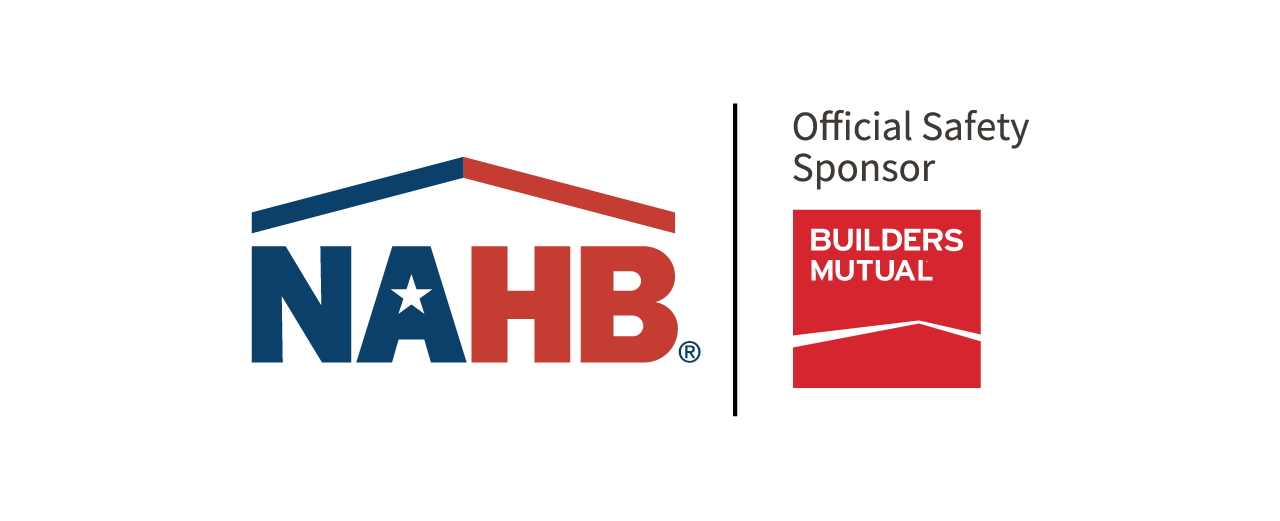Preparing Jobsites and Workers for Winter Weather
Winter weather can present extreme safety challenges for workers on home building jobsites, both outside and within the structure. With rapidly changing and dangerous conditions occurring outdoors, and hidden hazards inside structures, working in temperatures below freezing requires a plan.
As temperatures drop and wind speed increases, heat leaves the body more rapidly. This can lead to cold-induced injuries including hypothermia, which occurs when skin temperature lowers leading to declining internal body temperature and frostbite. Hypothermia and other similar medical emergencies could lead to serious lasting health problems and may even cause death.
Winter weather can also present risks to those working inside structures. The use of space heaters can present an elevated fire risk, so appropriate caution and constant monitoring should always be used when these devices are in operation. Another common risk is carbon monoxide poisoning when fuel-burning equipment and tools are used in buildings or semi-enclosed spaces without adequate ventilation.
These dangers increase during the winter months when this type of equipment is used in indoor areas that have been sealed tightly to block out cold temperatures and wind.
Preparation and planning is key to keeping the workers and the jobsite safe during the winter months. Here are some winter weather preparedness tips:
Stay aware of weather forecasts. Employers should watch the local weather and check the National Weather Service. If possible, schedule work during the warmest part of the day.
Limit exposure to the elements. When the wind and snow are blowing and temperatures are dangerously low, schedule outside work in shorter time blocks.
Require proper gear. Working outside during the winter requires the right gear for the job, including boots, heavy coats, gloves, hats and other essentials based on the weather. Encourage dressing in layers with a base layer of moisture-wicking fabrics to better handle temperature fluctuations and keep workers safe throughout the day, no matter the temperature.
Remove snow and ice. Snow can also hide dangerous materials that can fall to a lower level and injure a worker. Before work is started on a site, employers should ensure that snow is removed, sand is put down on walkways, and large patches of ice are chipped away.
Ensure adequate ventilation.When working inside structures during winter months, ensure that there is adequate ventilation for carbon monoxide or chemical fumes. Sources of carbon monoxide can include anything that uses combustion to operate, such as portable generators, space heaters, power tools, compressors, pumps, welding equipment, furnaces, gas-powered forklifts and motorized vehicles.
Inspect space heaters. Make sure electrical cords powering space heaters aren’t frayed or loosely connected. Also make sure the areas around heaters are free from debris and other potential fire fuels.
Inspect and prepare vehicles. Before heading into the winter, all work vehicles should be inspected to determine if they are fully functioning.
Educate workers on the signs of frostbite and hypothermia. Supervisors and workers need to know the symptoms of hypothermia and frostbite so that if anyone shows these signs, they can receive immediate medical attention.
When it comes to working in winter weather, taking the time to prepare or upgrade your safety plan before the temperatures drop and snows falls can help keep workers and the jobsite safe throughout the season.

Latest from NAHBNow
Jan 02, 2026
Trump Delays Higher Tariffs on Furniture, Kitchen Cabinets for One YearPresident Trump has announced he will be rolling back higher tariffs on furniture, kitchen cabinets and vanities that were set to go into effect on Jan. 1, 2026, until Jan. 1, 2027.
Jan 02, 2026
FHA’s MMI Fund Capital Ratio Remained Solid in Fiscal Year 2025The capital reserve ratio for the Federal Housing Administration’s Mutual Mortgage Insurance Fund ended the fiscal year at 11.47% — unchanged from the capital ratio for fiscal year 2024 and well above the congressionally mandated 2% capital ratio.
Latest Economic News
Dec 22, 2025
State-Level Employment Situation: September 2025In September 2025, nonfarm payroll employment was largely unchanged across states on a monthly basis, with a limited number of states seeing statistically significant increases or decreases. This reflects generally stable job counts across states despite broader labor market fluctuations. The data were impacted by collection delays due to the federal government shutdown.
Dec 19, 2025
Existing Home Sales Edge Higher in NovemberExisting home sales rose for the third consecutive month in November as lower mortgage rates continued to boost home sales, according to the National Association of Realtors (NAR). However, the increase remained modest as mortgage rates still stayed above 6% while down from recent highs. The weakening job market also weighed on buyer activity.
Dec 18, 2025
Lumber Capacity Lower Midway Through 2025Sawmill production has remained essentially flat over the past two years, according to the Federal Reserve G.17 Industrial Production report. This most recent data release contained an annual revision, which resulted in higher estimates for both production and capacity in U.S. sawmills.
